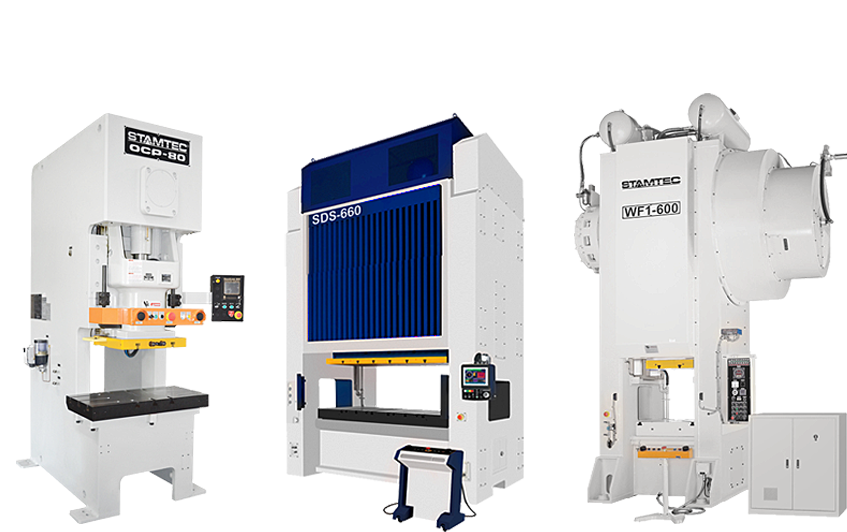
For more than 100 years, mechanical presses have been the mainstays of the metal-stamping world. They remain the most cost-effective solution for a high-production metal parts manufacturing system. Let’s take a closer look at these mechanical marvels.
From an operational standpoint, mechanical presses are straightforward: an electric motor supplies power to a flywheel that, when engaged by a clutch and brake, drives a gear train that transmits the power to the crankshaft, which moves the press slide up and down. The motor then restores the energy to the flywheel, and the process begins again. The working energy of the press depends on the flywheel’s mass and speed.
Press Advantages
These stamping machines offer a variety of advantages:
The two basic types of mechanical presses – gap frame and straight side – also offer their own benefits. Gap frame presses work well with smaller dies and provide easier access around the die. Straight side presses, offering greater rigidity and not as much deflection, provide higher accuracy and are usually more suitable for progressive die work.
Mechanical presses are best suited for flat to medium-depth drawn parts, including many automotive, appliance and hardware components. Part sizes can range from less than an inch to four feet.
A variety of link motion drives are available to enhance and expand the capabilities of these stamping machines.
Need to Know
When selecting the right mechanical press for your application, there are a number of questions you’ll need to answer, such as:
If you’re in the market for a new stamping press, Stamtec can help you identify the right press to achieve your goals. With more than 70 years of worldwide experience and 40 years in North America, we stock machines that range from 25 to 600 tons and can custom build presses up to 3,000 tons to meet your specific needs.